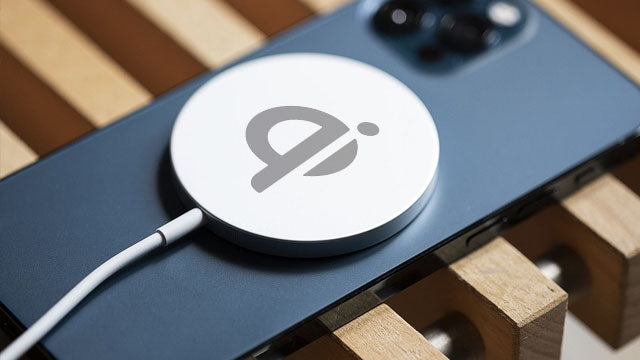Shopping cart
You have no items in your shopping cart.

By Shaista Qadri - Wireless charging has become an indispensable feature in modern electronic devices, offering convenience and eliminating the hassle of tangled cords. Among the various wireless charging standards available, Qi (pronounced "chee") has emerged as one of the most widely adopted technologies.
However, with advancements in technology, the introduction of Qi2 has brought about improvements and enhancements to the wireless charging experience. To better understand the disparity between Qi and Qi2 standards, let's delve into their key differences and capabilities.
Qi, developed by the Wireless Power Consortium (WPC), has been the predominant standard for wireless charging since its inception in 2008. It operates on the principle of electromagnetic induction, wherein power is transferred wirelessly from a charging pad or mat to a compatible device placed on its surface. Qi charging is widely supported across a range of smartphones, tablets, and other electronic devices, making it a ubiquitous feature in the consumer electronics market.
Power Output: Qi standard typically supports power output up to 5W/7.5W/10W/15W, catering to various device and charger specifications.
Charging Efficiency: While convenient, Qi charging efficiency can vary due to factors like alignment between the device and the charging pad.Qi1 reaches a maximum efficiency of 75% that too if the alignment of the coils is accurate.
Compatibility: Qi1 in all its versions supports devices which are Qi compatible some popular ones being the iPhone X,11,12,13,14 & Flagship Samsung phones such as Galaxy S24, S24+ & S24 Ultra, Galaxy S23, S23+ & S23 Ultra, Galaxy S22, S22+ & S22 Ultra, Galaxy S21 FE 5G, Galaxy Z Fold3, Fold4 & Fold5, Galaxy Z Flip3, Flip4 & Flip5
As technology continues to evolve, the demand for faster and more efficient charging solutions has led to the development of Qi2, also known as "Qi Extended Power Profile (EPP)." Qi2 builds upon the foundation of the original Qi standard, offering improvements in power delivery, charging efficiency, and compatibility. WPC in collaboration with Apple has managed to borrow the Apple patented Magsafe technology & make it open to Android devices as well.
Increased Power Output: Qi2 allows certified phones to charge at 15 watts, compared to the 5-watt limitation of the original Qi standard, enhancing charging speeds.
Enhanced Efficiency: Qi2 incorporates advancements in coil design, charging algorithms, and communication protocols to improve efficiency and reduce energy losses.
Backward Compatibility: Despite its enhancements, Qi2 remains backward compatible with existing Qi-enabled devices, ensuring seamless integration.
Future-Proofing: With support for higher power outputs and improved efficiency, Qi2 is poised to meet the growing power demands of next-generation electronic devices.
In summary, while both Qi and Qi2 standards enable wireless charging, Qi2 represents a significant advancement in power delivery, efficiency, and compatibility. With its higher power outputs and enhanced capabilities, Qi2 offers a compelling solution for users seeking faster and more efficient charging experiences. As technology continues to evolve, Qi2 is positioned to play a pivotal role in shaping the future of wireless charging, providing a reliable and efficient charging solution for modern electronic devices.